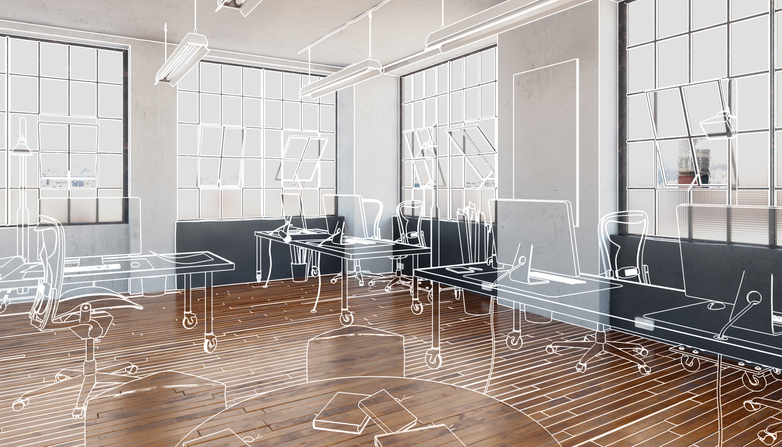Office fit-outs – What will the future workplace look like?
Businesses adapting to COVID-19
The COVID-19 pandemic and social distancing measures meant many businesses were forced to adapt their working practices overnight. Since then various new working practices have evolved – working from home entirely, hybrid week (mixture of working from home and in the office) and working in small suburban hubs rather city centre locations. As well as seeking to keep employees safe and provide more flexible work, businesses have had to address the various challenges these new arrangements bring, including maintaining (or even increasing) productivity and efficiency and ensuring business security.
Where once factors such as the size of the workplace, the location and rent were major factors when deciding where to operate a business, employers can now take account of other considerations and any cost savings may allow a business to invest more in their IT and technological resources to improve the work from home experience for their employees.
Future of the office post-COVID-19
In the year since the UK first went into lockdown many businesses have learnt that although there are some clear benefits for employees to work from home, it remains important to have a suitable office space where employees can come together to connect, bounce ideas of each other, create a company culture and avoid the feelings of isolation associated with working from home.
We expect to see more hybrid working arrangements post-COVID-19 and this in turn may allow businesses to reduce the size of their office space and/or operate from different locations.
Client care and interactions have also evolved during COVID-19. The boom in video conferencing platforms over the last year is likely to lead to some meetings continuing this way even after the end of lockdown restrictions, not least because of the environmental benefits, and the savings of time and transport costs, associated with reduced business travel. Even if only a proportion of all business meetings continue to be conducted online, this may mean businesses need less meeting spaces in their office premises.
Office fit-outs
There are numerous reasons why a business may want to move office and/or undertake a fresh fit-out, COVID-19 being just one of them. Businesses may however take additional factors into account as a result of COVID-19 such as spatial layouts and desk arrangements, occupancy of meeting rooms, flexibility, and the ability to facilitate effective cleaning regimes.
If however the business is the tenant of the office space, then it needs to ensure that its landlord is aware of the planned fit-outs works and that it has entered into an appropriate licence, giving it permission to proceed with the fit-out works. Some leases do allow tenants to construct/move demountable partitioning without the landlord’s consent but anything more substantial will require the prior consent of the landlord. The landlord should be supplied with plans, drawings, specifications and a programme of works setting out exactly what is planned. It needs to be clear that the structural integrity of the building will not be compromised, nor its service media overloaded or the other tenants in the building unduly effected.
If planning permission or building regulation consents are required, it will be for the tenant to obtain these.
The landlord may also insist that the tenant procures collateral warranties from the key professional consultants involved in the fit-out works to ensure that it has the appropriate security in place if something goes awry. The tenant should therefore ensure that it enters into appropriate construction contracts with the professional consultants and that these contracts oblige the professional consultant to provide a collateral warranty in favour of the landlord, if required.
Please contact Cathrine Ripley in FSP’s construction team if you have any questions arising from the issues discussed in this article.

